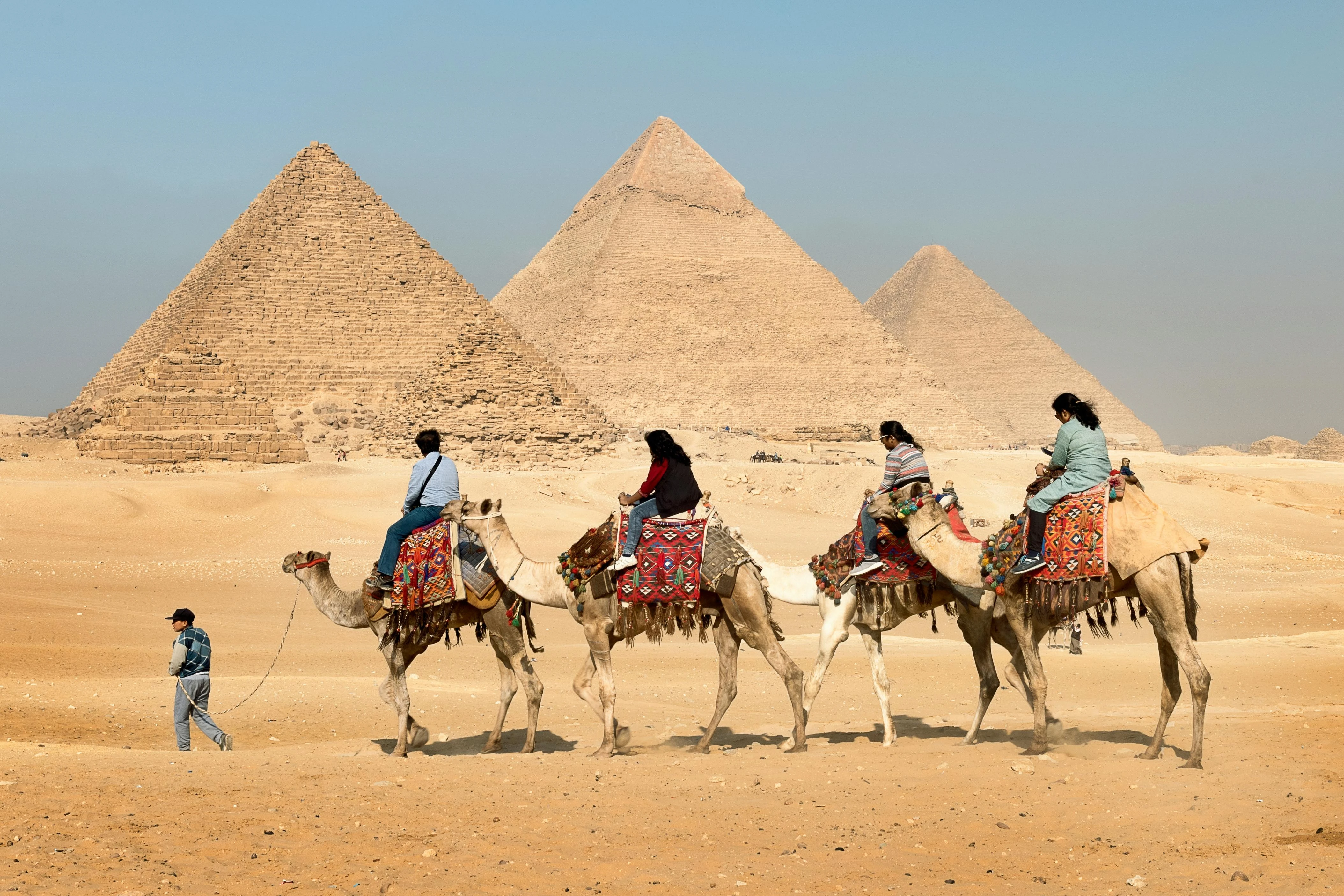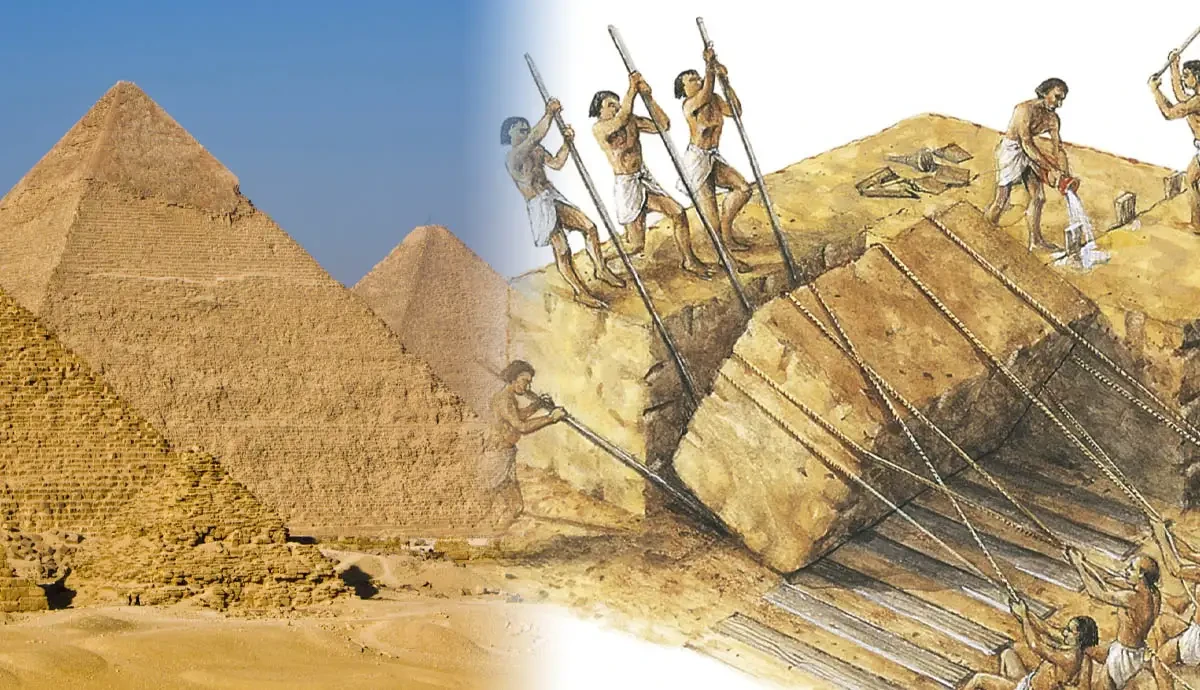The Great Pyramid was never constructed as a tourist attraction. Instead, it was an array of glory designed to house the carcasses of ancient kings.

History is incredible in the way it rewrites itself, it’s important to view all our actions from the lens of the perception of history in years to come. At the sight of the great pyramid, one of the commonest questions you ask in retrospect is what the heck is going through the minds of the initiator of this idea.
The Great Pyramid was never constructed as a tourist attraction. Instead, it was an array of glory designed to house the carcasses of ancient kings, a graveyard in short.
That’s insane, right? The economic and manpower required at that time in history to actualize this crazy dream. It was believed that about 100,000 workers made this a reality.
How Many Years Did It Take to Build the Great Pyramid?

Photo credit: https://www.thecollector.com/how-long-did-it-take-to-build-the-egyptian-pyramids/
Without a historical advantage, I could have easily concluded that the structure was completed within five years with all the needed tools. However, a Greek historian, Heroditus, has an answer to this.
Heroditus reported in the fifth century BCE that his Egyptian guides told him 100,000 men were employed for three months a year for twenty years to build the Great Pyramid; modern estimates of the number of laborers tend to be much smaller.
This discovery triggers questions about how the pyramid was built and why it seems like we can't recreate it now. Obviously, the question of recreating the pyramid shouldn’t be a concern of technical know-how or available tools. Yes! What makes the Great Pyramid a wonder is that the structure was far ahead of its age.
The pyramids are enormous structures made of millions of large stone blocks, some weighing several tons each. Modern construction techniques would struggle to handle such large and heavy materials with the precision and efficiency demonstrated by the ancient builders.
The construction began with the quarrying of limestone blocks from nearby quarries, which were transported to the site. These blocks were extracted using hammerstones, chisels, and wooden wedges.
Contrary to the myth of slave labor, most evidence suggests that the pyramids were constructed by a workforce of skilled laborers, artisans, and temporary workers.
Proofs That the Pyramid Is Built by Humans
When one looks at the picture of the pyramid isolated in what looks like a desolate desert, one may be quick to assume the structure was built by some superhuman, aliens, or slave because of the rigor.
However, excavations have uncovered worker's villages near the pyramids, including living quarters, bakeries, and workshops. These findings indicate organized labor rather than slave labor.

Photo Credit: Ruins of barracks, port unearthed at Egypt's Giza Pyramids (nbcnews.com)
The writings of ancient historians, such as Herodotus, and records from the period provide accounts of pyramid construction. Although some accounts, like those of Herodotus, were written centuries after the pyramids were built, they still offer valuable insights.
The Diary of Merer, an ancient papyrus, describes the transportation of limestone blocks from Tura to Giza during the reign of Pharaoh Khufu.
Tour to the Great Pyramid: Choosing the Best Tourism Package
The Egyptian economy and businesses across the nation make tonnes of money yearly from tourists traveling from different nations; however, it gets bad when every business operator and indigenes around the pyramid tries to make a living out of you.
I couldn’t believe my eyes when virtually everyone you met would have a piece of information to sell to you in exchange for some tips. While visitation to the site is free for everyone apart from the 360 EGP, an equivalent of $10 (accepts only credit cards), it may be wise to consider a tourism package that will save your hard-earned dollars.

Tourism Package to Consider
Giza Pyramids and The Sphinx Free Walking Tour: On this tour of the pyramids, you'll be transported back to Ancient Egypt. Although they are part of Giza, the pyramids are a must-see in Cairo.
First, you'll visit the Great Pyramids of Giza—Cheops, Chephren, and Mykerinos. Then, explore the Valley Temple, where the priests mummified King Chephren, the owner of the second pyramid on the Giza plateau.
You'll also get an up-close view of the Sphinx, the legendary guardian with the body of a lion and the head of King Chephren, standing by the vast funerary complex.
Things to note:
- The tour excludes the entrance fees to the Giza pyramids area.
- The entrance fees ticket to the Giza pyramids area cost 360 EGP.
- Free walk is a pay-what-you-want walking tour, which means it's completely free to book and join the group, but the 'guide' would appreciate being rewarded once the tour ends. Some people give $20, and some give US$ 50, and you choose the price.
- You can make your tour bookings here: Giza Pyramids and The Sphinx Free Walking Tour - Cairo | FREETOUR.com
8-Hour Private Tour of the Pyramids: Explore Cairo’s must-see sights in just one day with your personal Egyptologist and a Wi-Fi-enabled minivan on this convenient door-to-door tour.
You will visit the Pyramids of Giza and the Great Sphinx, take a camel ride across the desert, and enjoy a restaurant lunch. In the afternoon, discover two iconic attractions: the Egyptian Museum of Antiquities and the Khan Al-Khalili Bazaar.
Things to note:
- This tour package costs $99 per adult.
- Confirmation will be received at time of booking
- Vegetarian option is available, please advise at time of booking if required
- Infant meals not included
- Dress code is smart casual
- Travelers should have a moderate physical fitness level
- Please note that pickup from Cairo airport or from locations outside range requires extra charge
- This is a private tour/activity. Only your group will participate.
- You can make your tour bookings here: 2024 (Cairo) 8-Hour Private Tour of the Pyramids, Egyptian Museum and Bazaar from Cairo (tripadvisor.com)
Have the Pyramids Been Fully Explored?
Like many ancient structures, the Great Pyramid continues to be a source of fascination and study for archaeologists and historians. Despite extensive exploration, it has not been fully explored.
Advances in technology, such as ground-penetrating radar and muon tomography, have revealed hidden chambers and anomalies within the pyramid that were previously unknown. These findings suggest there may still be undiscovered passages or rooms, keeping the pyramid in mystery even after centuries of study.
Are There Tunnels Under the Pyramids?
There are indeed tunnels and passageways beneath the pyramids, contributing to their complex and enigmatic nature. These tunnels were constructed as part of the elaborate burial practices of the ancient Egyptians, designed to protect the pharaoh’s journey to the afterlife.
Some of these subterranean passages connect various chambers within the pyramid, while others extend outward, potentially linking to other pyramids or structures on the Giza plateau. The full extent and purpose of these tunnels are still subjects of ongoing research and debate among experts.
Can You Go Inside the Pyramids?
Yes, visitors can go inside the Great Pyramid of Giza. Entering the pyramid offers a unique opportunity to walk through the same passages that ancient priests and pharaohs once traversed.
Inside, you can explore several key areas, including the Descending Passage, the Grand Gallery, and the King's Chamber. The experience of being inside such an ancient and historically significant structure is awe-inspiring, giving you a deeper appreciation for the architectural prowess of the ancient Egyptians.
However, access to the interior of the pyramid can be limited, with restrictions on the number of visitors allowed inside at any given time to preserve the structure. Additionally, the narrow and steep passages can be physically demanding, so it's advisable to be prepared for a bit of a climb.
Final Thoughts
Visiting the Great Pyramid of Giza is an unforgettable experience combining awe-inspiring architecture and rich historical significance. While much has been discovered about this iconic structure, there is still so much to learn, making every visit an opportunity for new revelations and deeper understanding.

